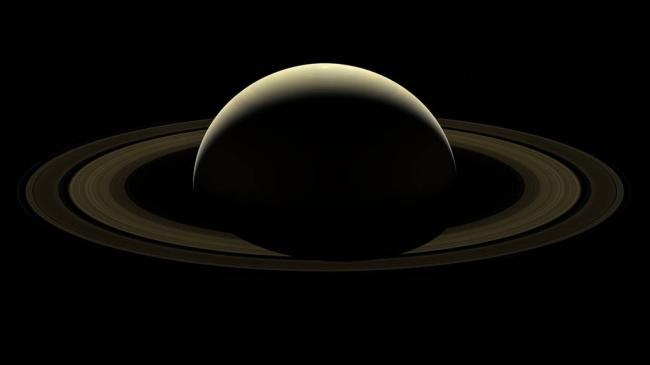
Washington, Nov 22 (IBNS): In a fitting farewell to the planet that had been its home for over 13 years, the Cassini spacecraft took one last, lingering look at Saturn and its splendid rings during the final leg of its journey and snapped a series of images that has been assembled into a new mosaic.
Cassini’s wide-angle camera acquired 42 red, green and blue images, covering the planet and its main rings from one end to the other, on Sept. 13, 2017, read the NASA website.
Imaging scientists stitched these frames together to make a natural color view. The scene also includes the moons Prometheus, Pandora, Janus, Epimetheus, Mimas and Enceladus.
There is much to remember and celebrate in marking the end of the mission. Cassini's exploration of Saturn and its environs was deep, comprehensive and historic.
"Cassini’s scientific bounty has been truly spectacular -- a vast array of new results leading to new insights and surprises, from the tiniest of ring particles to the opening of new landscapes on Titan and Enceladus, to the deep interior of Saturn itself," said Robert West, Cassini's deputy imaging team leader at NASA's Jet Propulsion Laboratory in Pasadena, California.
The Cassini imaging team had been planning this special farewell view of Saturn for years. For some, when the end finally came, it was a difficult goodbye.
"It was all too easy to get used to receiving new images from the Saturn system on a daily basis, seeing new sights, watching things change," said Elizabeth Turtle, an imaging team associate at the Johns Hopkins University Applied Physics Laboratory, Laurel, Maryland. "It was hard to say goodbye, but how lucky we were to be able to see it all through Cassini's eyes!"
For others, Cassini's farewell to Saturn is reminiscent of another parting from long ago.
"For 37 years, Voyager 1's last view of Saturn has been, for me, one of the most evocative images ever taken in the exploration of the solar system," said Carolyn Porco, former Voyager imaging team member and Cassini's imaging team leader at the Space Science Institute in Boulder, Colorado. "In a similar vein, this 'Farewell to Saturn' will forevermore serve as a reminder of the dramatic conclusion to that wondrous time humankind spent in intimate study of our Sun's most iconic planetary system."
Launched in 1997, the Cassini spacecraft orbited Saturn from 2004 to 2017. The mission made numerous dramatic discoveries, including the surprising geologic activity on Saturn's moon Enceladus and liquid methane seas on Saturn's largest moon, Titan. Cassini ended its journey with a dramatic plunge into Saturn's atmosphere on Sept. 15, 2017, returning unique science data until it lost contact with Earth.
The Cassini-Huygens mission is a cooperative project of NASA, ESA (European Space Agency) and the Italian Space Agency. NASA's Jet Propulsion Laboratory, a division of Caltech in Pasadena, manages the mission for NASA's Science Mission Directorate, Washington.
The Cassini orbiter and its two onboard cameras were designed, developed and assembled at JPL.
The imaging team consists of scientists from the U.S., England, France, and Germany.
The imaging operations center and team leader are based at the Space Science Institute in Boulder, Colorado.
Image Credits: NASA/JPL-Caltech/Space Science Institute
Support Our Journalism
We cannot do without you.. your contribution supports unbiased journalism
IBNS is not driven by any ism- not wokeism, not racism, not skewed secularism, not hyper right-wing or left liberal ideals, nor by any hardline religious beliefs or hyper nationalism. We want to serve you good old objective news, as they are. We do not judge or preach. We let people decide for themselves. We only try to present factual and well-sourced news.







